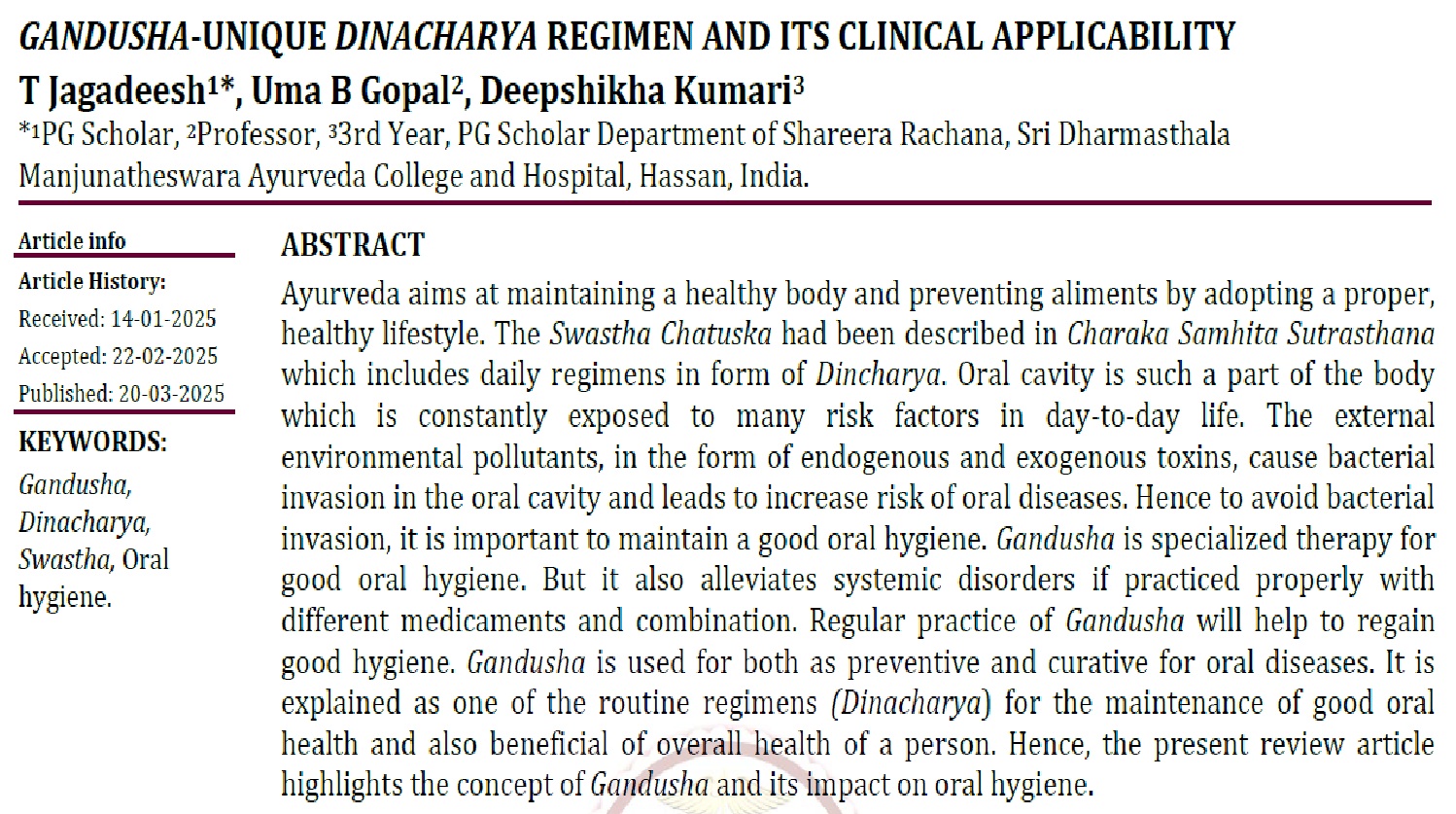Gandusha- Unique Dinacharya Regimen and its Clinical Applicability
DOI:
https://doi.org/10.47070/ayushdhara.v12i1.1943Keywords:
Gandusha, Dinacharya, Swastha, Oral hygieneAbstract
Ayurveda aims at maintaining a healthy body and preventing aliments by adopting a proper, healthy lifestyle. The Swastha Chatuska had been described in Charaka Samhita Sutrasthana which includes daily regimens in form of Dincharya. Oral cavity is such a part of the body which is constantly exposed to many risk factors in day-to-day life. The external environmental pollutants, in the form of endogenous and exogenous toxins, cause bacterial invasion in the oral cavity and leads to increase risk of oral diseases. Hence to avoid bacterial invasion, it is important to maintain a good oral hygiene. Gandusha is specialized therapy for good oral hygiene. But it also alleviates systemic disorders if practiced properly with different medicaments and combination. Regular practice of Gandusha will help to regain good hygiene. Gandusha is used for both as preventive and curative for oral diseases. It is explained as one of the routine regimens (Dinacharya) for the maintenance of good oral health and also beneficial of overall health of a person. Hence, the present review article highlights the concept of Gandusha and its impact on oral hygiene.
Downloads

Downloads
Published
Issue
Section
License
Copyright (c) 2025 AYUSHDHARA

This work is licensed under a Creative Commons Attribution-NonCommercial-ShareAlike 4.0 International License.


